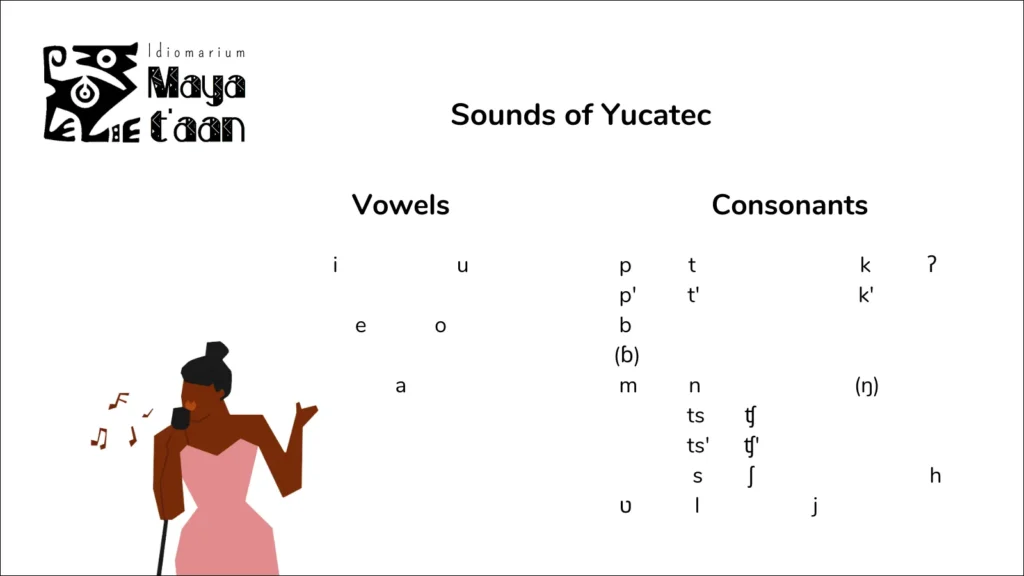
Vowels
There are five vowels /i e a o u/ in Yucatec Maya. Each vowel can be either short or long. Compare the following Yucatec words – their meaning changes depending on the length of the vowel.
| Yucatec | English |
|---|---|
| kax | to find |
| kaax | chicken |
| men | by |
| meen | to do |
| p'is | to choose |
| p'iis | to measure |
| tok | to protect |
| took | to snatch away |
| tup | to extinguish |
| tuup | earring |
Often, two vowels of the same kind are separated by a glottal stop. They are pronounced with a little break in between, for instance, Yucatec o’o sounds similarly to English oh-oh. In colloquial rapid speech the glottal stop is hard to hear.
| Yucatec | English |
|---|---|
| ja'ab | year |
| jo'ol | head |
| tu'ux | where |
| che'ej | to laugh |
| i'ij | ear |
Tones
Yucatec is a tonal language, that is to say, change in tone might trigger a change in meaning. Only long vowels can bear tone. There are two different manners of articulation: rising and falling. Compare the two Yucatec words: máan ‘to pass (by)’ is pronounced with a rising tone while in maan ‘to buy’ the tone is falling. The rising tone is marked with an acute accent, while the falling tone is usually unmarked or bears a gravis accent, maan = màan.
Many of the world’s languages are like Yucatan or have even more tones: the languages of Sub-Saharan Africa, e.g. Fula, Igbo, Yoruba; over 50% of the Sino-Tibetan languages, e.g. Burmese, Cantonese, Mandarin; numerous indigenous languages of North America; Vietnamese and others.
With the exception of Mocho’, San Bartolo Tzotzil, Uspantek and Yucatec, the Mayan languages do not have tones.
Consonants
Yucatec Maya has 20 consonants, the most characteristic of which are the glottalized stops <p’>, <t’>, <k’>, <ts’>, <ch’> and the glottal stop <‘>.
Advanced pronunciation rules
A schwa is sometimes inserted between two consonants as an epenthetic vowel, for instance, kchamalo’ob ‘our cigarettes’ is pronounced [kə ʧamalɔʔɔb]. An /i/ is inserted if the following syllable contains an /i/: k bin is realized as [ki bin].
